Constructing a home in "Minecraft"
- 1Selecting a location for construction in Minecraft
- 2The primary assets needed for constructing a home in "Minecraft"
- 3Designing a home in Minecraft
- 4The primary types of homes in "Minecraft"
- 5Constructing the foundations and walls in Minecraft
- 6Adorning the interior and exterior in "Minecraft"
- 7Introducing home furnishing and accessories into Minecraft
- 8Home Security and Defense in "Minecraft"
Most Minecraft players construct a home for their character during the game's early stages. Typically, they build a permanent abode once, with relocation being a rarity. Minecraft enthusiasts pay significant attention to selecting sites, materials, layout, and construction.
Selecting a location for construction in Minecraft
Building a home in Minecraft requires careful location selection to ensure the owner can easily locate it when venturing far and wide. In multiplayer mode, builders add an extra layer of strategy to their location choice – they aim to make their refuge less noticeable to other players.
Common places to build homes are in the open flat terrain or inside a cave. Proximity to resources like stone, sand, trees, and ores form a critical strategic consideration. A prime piece of real estate is the border between two biomes.
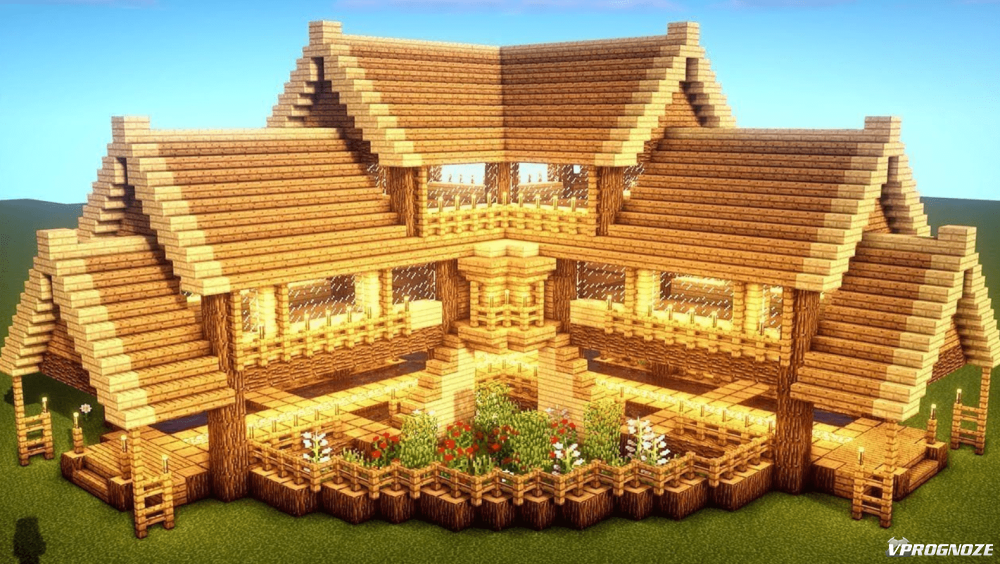
A cave home provides a convenient option for temporary accommodation. Building within an enclosed space requires fewer resources for erecting walls, floors, and ceilings. Players can source the earth and stone needed for smoothing walls and closing off unnecessary passages directly on-site.
The downside to cave dwellings is the increased risk of zombie, skeleton, and other mob attacks, who inhabit underground regions and surface at night.
If you are constructing a building on level terrain, in a valley or on a mountain plateau, you’ll need an inventory of materials for walls, a roof, and windows. Window size and design should be carefully considered to prevent spiders or other hostile mobs from gaining entry. The advantage of open spaces is the ability to build a home nearby several biomes and extract resources right at home, without wasting time and energy clearing the territory for your architectural aspirations.
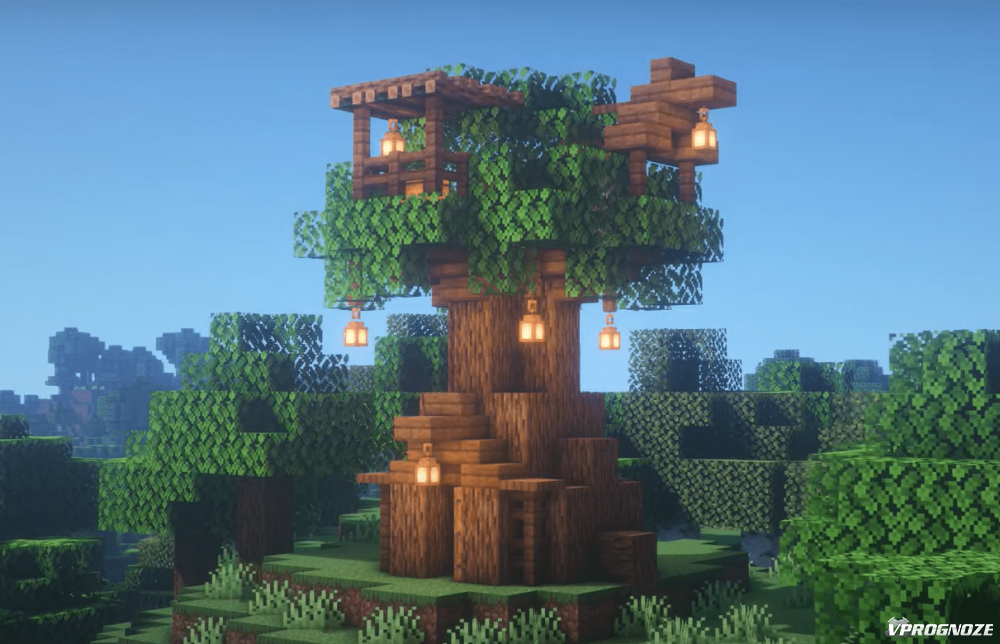
The primary assets needed for constructing a home in "Minecraft"
In Minecraft, building a secure and functional base is crucial for protection against enemies and for providing a space for relaxation and creativity. A well-constructed shelter not only serves as a defense but also as a foundation for players' architectural expressions. Here's a guide on selecting materials and constructing a sturdy, efficient base:
Selecting Building Materials
Stone or Cobblestone: Ideal for constructing durable walls resistant to creeper explosions and unintended ignitions. Cobblestone is easily obtained by mining stone with a pickaxe and can be smelted back into stone for a more refined look.
Avoid Earth Blocks: While readily available, earth blocks can be manipulated by Endermen, potentially compromising the integrity of your structure.
Wood: Easily accessible and versatile for crafting various building components like planks, slabs, and stairs. However, wood is flammable and poses a risk near lava or during explosions.
Bricks, Quartz, Concrete, and More: For decorative purposes, players often turn to materials like normal bricks, quartz blocks, concrete, planks, logs, terracotta, prismarine, and glass. Each offers unique aesthetic qualities and physical properties suitable for different architectural styles.
Crafting Materials
Stone Variants: Stone slabs, smooth stone, stone bricks, and stone steps are crafted from stone blocks, offering a range of decorative options.
- Wood Products: Wood can be crafted into planks, slabs, fences, doors, and more, with the color and texture varying by tree type.
- Bricks and Terracotta: Smelting clay yields bricks for construction or terracotta, which can be dyed for colourful designs.
- Glass: Made of smelting sand, glass blocks are perfect for underwater constructions or terrestrial windows when crafted into panes.
- Concrete: A durable material created by mixing cement (crafted from sand and gravel) with water and dye for colour.
- Nether Quartz: Used for crafting a variety of decorative blocks, quartz is unique for its non-reversible crafting process.
- Prismarine: Available in several types, this greenish-blue mineral is mined from Ocean biomes and is ideal for underwater projects.
Building Strategies
- Plan Ahead: Gather materials before starting your build to avoid interruptions for resource hunting.
- Utilize the Environment: Mine materials from abundant sources like mountains and forests, and consider the biome when choosing materials (e.g., prismarine for underwater).
- Consider the Function: Choose materials based on the purpose of your build, whether it's for defense, aesthetics, or both.
- Adapt to the Game Mode: In competitive eSports scenarios, the speed of construction and strategic use of resources can be crucial. Efficient resource management and strategic building can provide a significant advantage.
The choice of building materials in Minecraft not only affects the durability and functionality of your structures but also their appearance. Whether you're crafting a simple cottage or an elaborate fortress, the right materials can enhance both the aesthetic appeal and the strategic value of your build. With careful planning and creative design, your Minecraft base can serve as a safe haven, a strategic point, and a personal expression of architectural creativity.
Designing a home in Minecraft
Every constructing endeavor anticipates the existence of a detailed blueprint and meticulously calculated plans. Our hero needs a reliable fortress that can withstand enemy assaults and provide shelter against the elements.
The layout includes zones for relaxation and creativity. Players stockpile in the construction, the required essentials for survival and operations: furniture, food, tools, material reserves.
When crafting a design, it is vital to calculate the volume and cost of construction materials, the time needed for resource gathering, and manufacturing materials.
How to craft a future home plan
When creating a home plan, it is necessary to define the dwelling's parameters:
- the dimensions and shape of the building's foundation;
- the number and area of functional zones;
- the placement of rooms, doors, windows;
- the architectural style of the building;
- the need for any number of decorative elements.
The plan can be kept in memory, hand-drawn on paper, or utilized through computer programs.
The sketch allows for a clear vision of the work outcome, calculates the precise number of construction materials, avoids excess decorative finishes, and evaluates colour combinations.
The primary types of homes in "Minecraft"
Popular Residential Structures in Minecraft:
- The basic box edifice, perfect for temporary stays or when a player is more concerned about functionality rather than aesthetics;
- The standard wooden or stone house, boasting a few rooms with modest decorations. This offers a balance between comfort and simplicity;
- High-tech residences that feature large terraces, swimming pools, garages, and large glass windows–a testament to a player's creativity and resources;
- Novelty habitats shaped like different objects or creatures, showcasing the builder's creative mind prioritizing the exterior look of the dwelling;
- Classic-style structures that faithfully balance functionality with decorative finishing touches–a timeless and effective approach in game architecture.
Constructing the foundations and walls in Minecraft
The foundation is the bedrock of a building and the first step in construction. Traditionally, stone, concrete, or brick are chosen for laying a foundation.
Establishing a foundation:
- Select a flat horizontal area of adequate size devoid of any water congregations.
- Lay out the first row starting from the corner and along the perimeter of the building.
- A second layer of blocks should go on top of the first row, aligned vertically and offset towards the building's corner by half a block.
- Continue erecting the foundation until your required height is reached.
The principle of wall construction is analogous to foundation assembly.
Users who are only getting acquainted with the game, or constructing a simple structure, often make the walls flat and monotone.
Adorning the interior and exterior in "Minecraft"
The visual architecture- the exterior appearance of the building- significantly dictates its internal functionalities in an architectural complex.
In Minecraft, players can construct houses on a variety of foundational shapes such as rectangles, circles, or ovals. The shapes extend to the design of the roof, which can be flat or multi-sloped, and players can opt for their desired number of floors and buildings.
To lend a unique character to the structure, decorative elements like towers, arches, columns, bridges, staircases, balconies and terraces, sculptures, bodies of water, lamps, and landscaping are employed.
The interior of the dwelling can be made more diverse and vibrant through the use of innovative storage systems, such as trap doors and barrels, plants, bookshelves, unique light fixtures, aquariums, fireplaces, and paintings.
Introducing home furnishing and accessories into Minecraft
Seasoned players employ mods, such as Mr. CrayFishs Furniture Mod, to invigorate their abodes with furniture, appliances, and assorted household items within the gaming landscape.
Interested individuals can access the indispensable download link from dedicated websites catering to the gaming community. After securing the mod, the subsequent step is to unzip the archive and transfer the content into the “.minecraft/mods” folder.
The mod's implementation empowers the homeowner character with a variety of items:
- Furniture assortment – tables, chairs, cabinets, sofas, armchairs, curtains, toilets, sinks, bathtubs, and shower stalls;
- Electrical appliances – television sets, computers, radios, printers, refrigerators, stoves, ovens, extractor hoods, dishwashers, washing machines, and assorted small kitchen appliances;
- Decorative items – a mirror, chimney, bonfire, doorbell, Christmas tree and garlands, a swimming pool trampoline, garden furniture, and fence.
Quoted: "Obtained items boast functionality: players can sit on the sofa, dive from the trampoline, grill, and cook on the stove." Signifying that this mod isn't just for aesthetics but also enhances the player’s in-game interaction and experience.
Home Security and Defense in "Minecraft"
The player is using their home as a sanctuary against the hostile inhabitants of the game world.
Merely erecting a dwelling isn't enough to stave off zombies and other monsters.
Veteran gamers suggest taking additional safety measures including:
- constructing traps, such as effective lava moats or wither roses;
- installing lighting in the area around the house, as many mobs shy away from fire;
- building a high fence using an explosion-resistant material;
- placing an iron door since zombies are unable to break through these;
- sleeping throughout the night since your character is invulnerable to monster attacks while they slumber.
Installation of doors, windows, and other elements for security
Doors and windows are essential components of a residential home, allowing you to observe the outside world from a secure location and restrict unauthorized entry into your dwelling.
Minecraft offers two types of entry doors - wooden and iron. Crafting these requires planks or iron ingots, respectively.
When installing a door, it should face the player and be positioned on opaque blocks street-side.
Iron gates are pricier but more robust and reliable than their wooden counterparts.
Window openings should always be covered with glass. This material is opaque for monsters, rendering creatures unable to see into your home. To adorn their windows, builders typically opt for glass panes but on occasion also use glass blocks.
Using weapons and blocks to protect against monsters
To defend their territory against monsters, players construct sturdy fences, deploy lighting, and set up traps. These could comprise:
- a moat with lava, with the homeowner crossing it via a retractable bridge or jumping over;
- hidden pits sporting a trap at the bottom;
- a decoy coupled with a dynamite;
- a suffocating trap made of redstone blocks;
- pitfall hazards involving a trapdoor.
Fences are traditionally made from stone, brick, iron, or wood.
Monsters are adverse to bright light and fire. Therefore, stake out the periphery of your yard and the entrance of your building with lanterns and torches, and ignite bonfires for their deterrent effect.

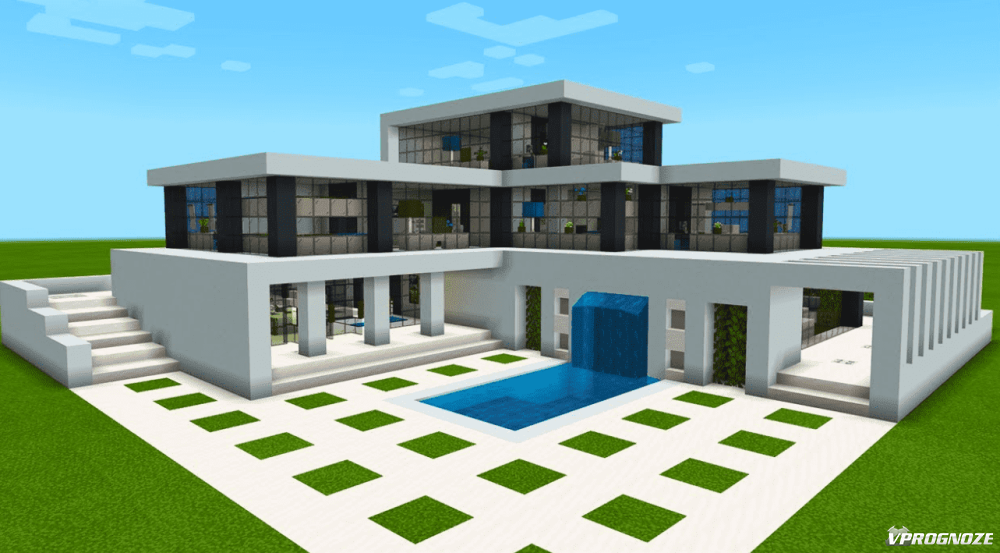
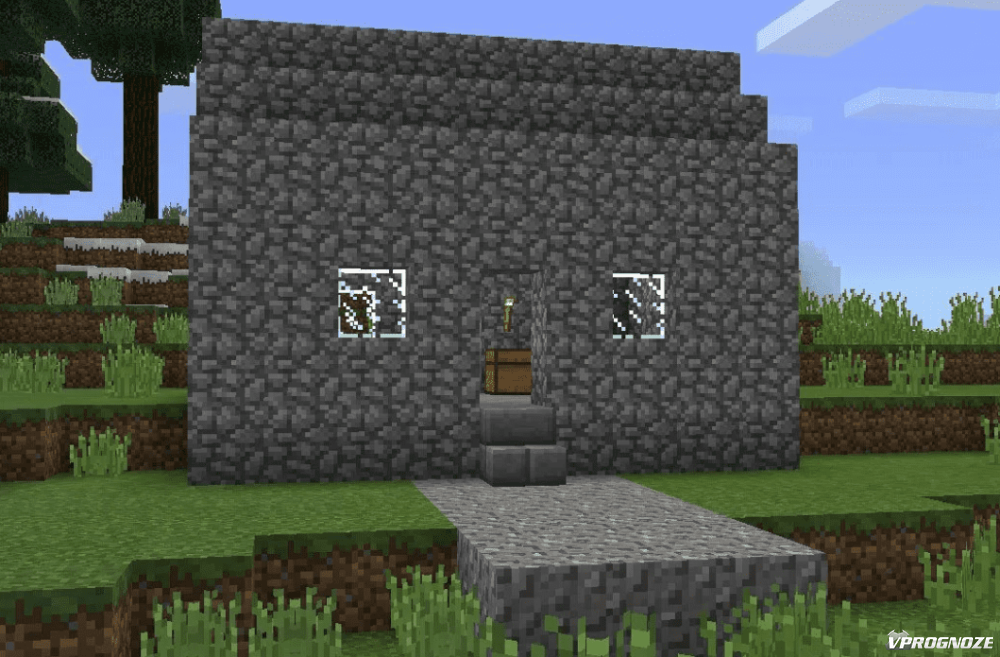
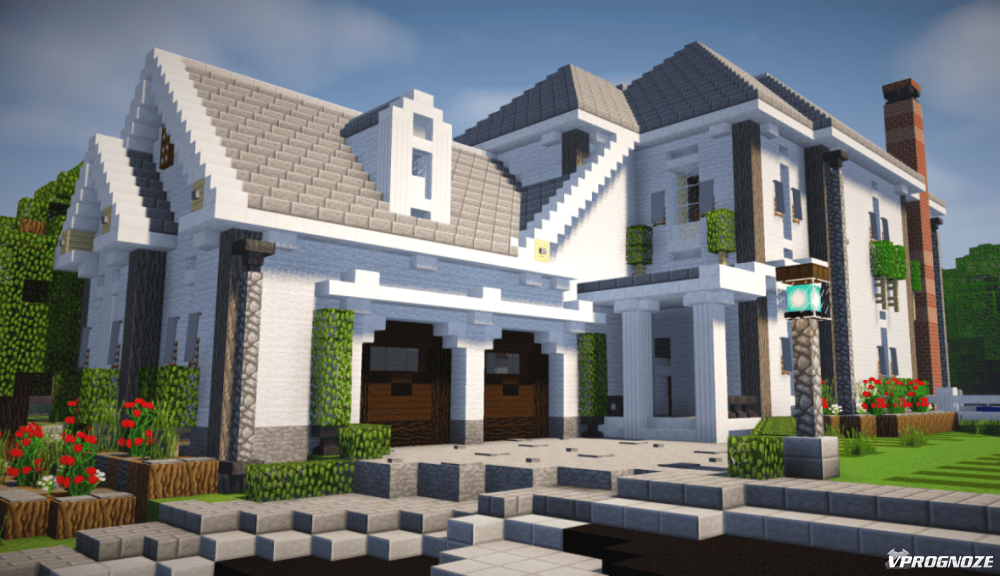
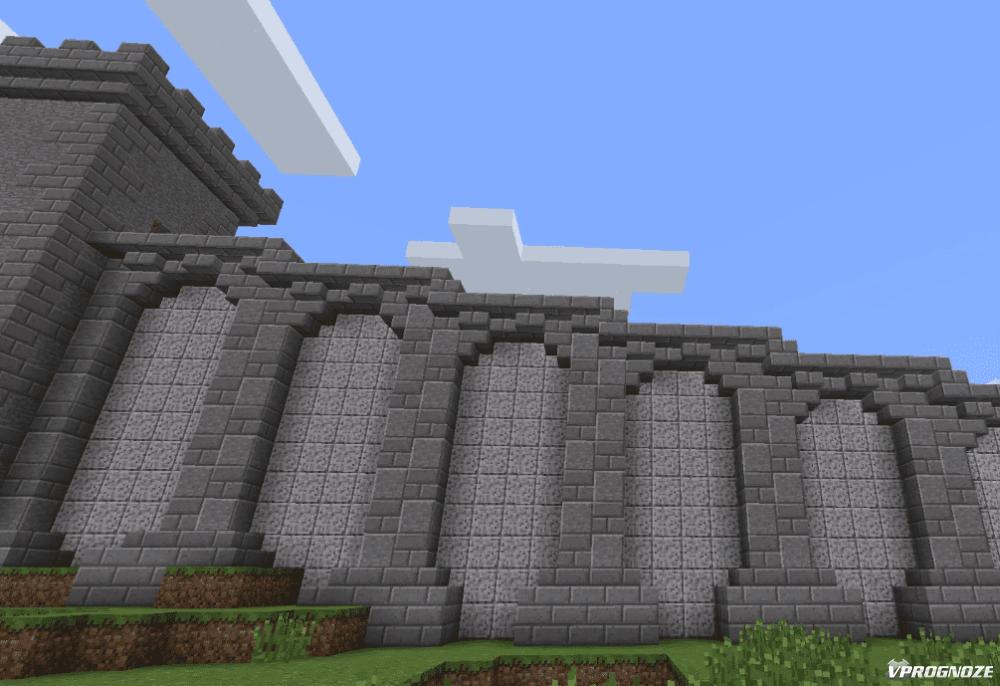
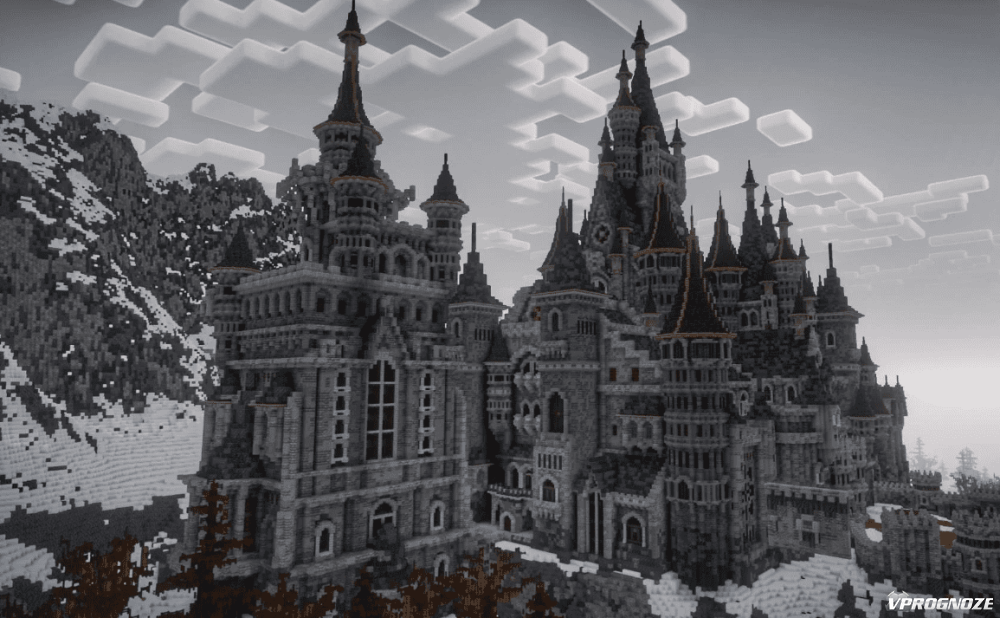
Comments0